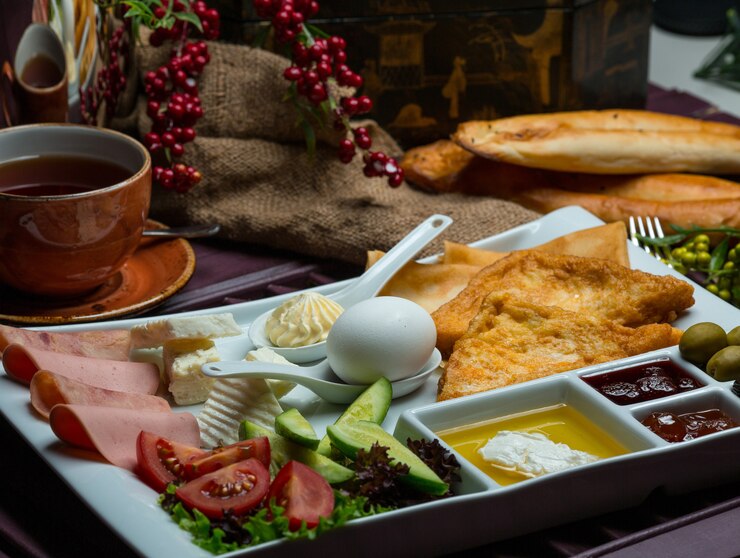Introduction to Cevıırı – Turkish raw meat dish
Cevıırı is a traditional Turkish raw meat dish that has been enjoyed for centuries. It is a culinary delight that offers a unique and bold flavor profile, making it a must-try for adventurous food enthusiasts. In this article, we will dive into the fascinating history and cultural significance of Cevıırı, explore its ingredients and preparation methods, discuss the traditional methods of serving this dish, explore its variations and regional specialties, and also touch upon the health and safety considerations of consuming raw meat. So, let’s embark on a journey to discover the world of Cevıırı!
The history and origin of Cevıırı
Cevıırı traces its roots back to the nomadic Turkic tribes of Central Asia. These tribes, known for their love of meat, would preserve and consume raw meat as a means of sustenance during their long journeys. Over time, the practice of consuming raw meat made its way to Anatolia, the heartland of Turkey, and evolved into what we now know as Cevıırı. The exact origin of the dish is unclear, but it is believed to have been popularized in the southeastern region of Turkey.
Ingredients and preparation of Cevıırı
Cevıırı is traditionally made using high-quality, fresh, and lean beef or lamb. Some variations of Cevıırı also include onion, garlic, and parsley for added freshness. The mixture is then shaped into small, bite-sized patties or meatballs, which are served raw.
To ensure the highest standards of hygiene and safety, it is crucial to source the meat from trusted suppliers and handle it with utmost care. The meat should be chilled and processed in a clean environment to minimize the risk of contamination. It is recommended to consume Cevıırı immediately after preparation to preserve its freshness and prevent any potential health hazards.
Cultural significance of Cevıırı in Turkish cuisine
Cevıırı holds a special place in Turkish cuisine and is considered a delicacy. It is often served as an appetizer or a main course during festive occasions, family gatherings, and special events. The dish is deeply rooted in Turkish culture and is a testament to the rich culinary heritage of the country.
Turkish people take great pride in their traditional cuisine, and Cevıırı is no exception. It is a symbol of culinary artistry and a way for the Turks to showcase their skill in preparing and presenting raw meat in a safe and delicious manner. The dish has become a beloved part of the Turkish culinary identity, and its popularity continues to grow both locally and internationally.
Traditional methods of serving Cevıırı
Cevıırı is traditionally served on a large platter, accompanied by an array of side dishes and condiments. It is often enjoyed with freshly baked bread, pickles, and a variety of meze, which are small plates of appetizers.
Another traditional way of serving Cevıırı is on a skewer, similar to kebabs. The meat is threaded onto long metal skewers and grilled over an open flame, resulting in a smoky and charred flavor. This method of preparation adds a unique twist to the dish while still maintaining its raw meat essence.
Cevıırı variations and regional specialties
As with many traditional dishes Cevıırı has evolved over time, giving rise to various regional specialties and variations. In different parts of Turkey, you may find unique twists on the classic recipe, incorporating local ingredients and flavors.
In some coastal regions, Cevıırı can be made using fresh fish or seafood instead of meat, resulting in a lighter and refreshing version of the dish. This seafood variation is particularly popular during the summer months when people crave lighter and more refreshing options.
Health and safety considerations of consuming raw meat
While Cevıırı is a beloved dish in Turkish cuisine, it is essential to exercise caution when consuming raw meat. Raw meat carries a risk of bacterial contamination, including the presence of harmful pathogens such as E. coli and Salmonella. To minimize these risks, it is crucial to source the meat from reputable suppliers and ensure proper hygiene during preparation.
It is also important to consume Cevırı immediately after preparation to minimize the risk of bacterial growth. Individuals with compromised immune systems, pregnant women, and young children should avoid consuming raw meat altogether.
Cevıırı in popular culture and media
Cevırı has gained recognition beyond the borders of Turkey and has found its way into popular culture and media. It has been featured in various culinary shows and documentaries, showcasing its unique preparation methods and cultural significance. The dish has also become a favorite among food bloggers and influencers who appreciate its bold flavors and exotic appeal.
It serves as a bridge between cultures, fostering a deeper appreciation and understanding of Turkey’s culinary heritage.
Translating Cevıırı to other languages
The word “Cevırı” itself is a challenge to translate accurately into other languages due to its cultural and culinary significance. However, it is often referred to as “Turkish raw meatballs” or “Turkish raw minced meat dish” in English, which provides a general understanding of the dish. It is important to note that these translations may not fully capture the essence and cultural context of Cevıırı, but they serve as a starting point for non-Turkish speakers to explore and appreciate this unique culinary creation.
Conclusion
Cevıırı is not just a dish; it is a window into the rich history and cultural heritage of Turkey. Its origins trace back to the nomadic Turkic tribes, and it has evolved into a beloved delicacy that showcases the resourcefulness and culinary skills of the Turkish people.
